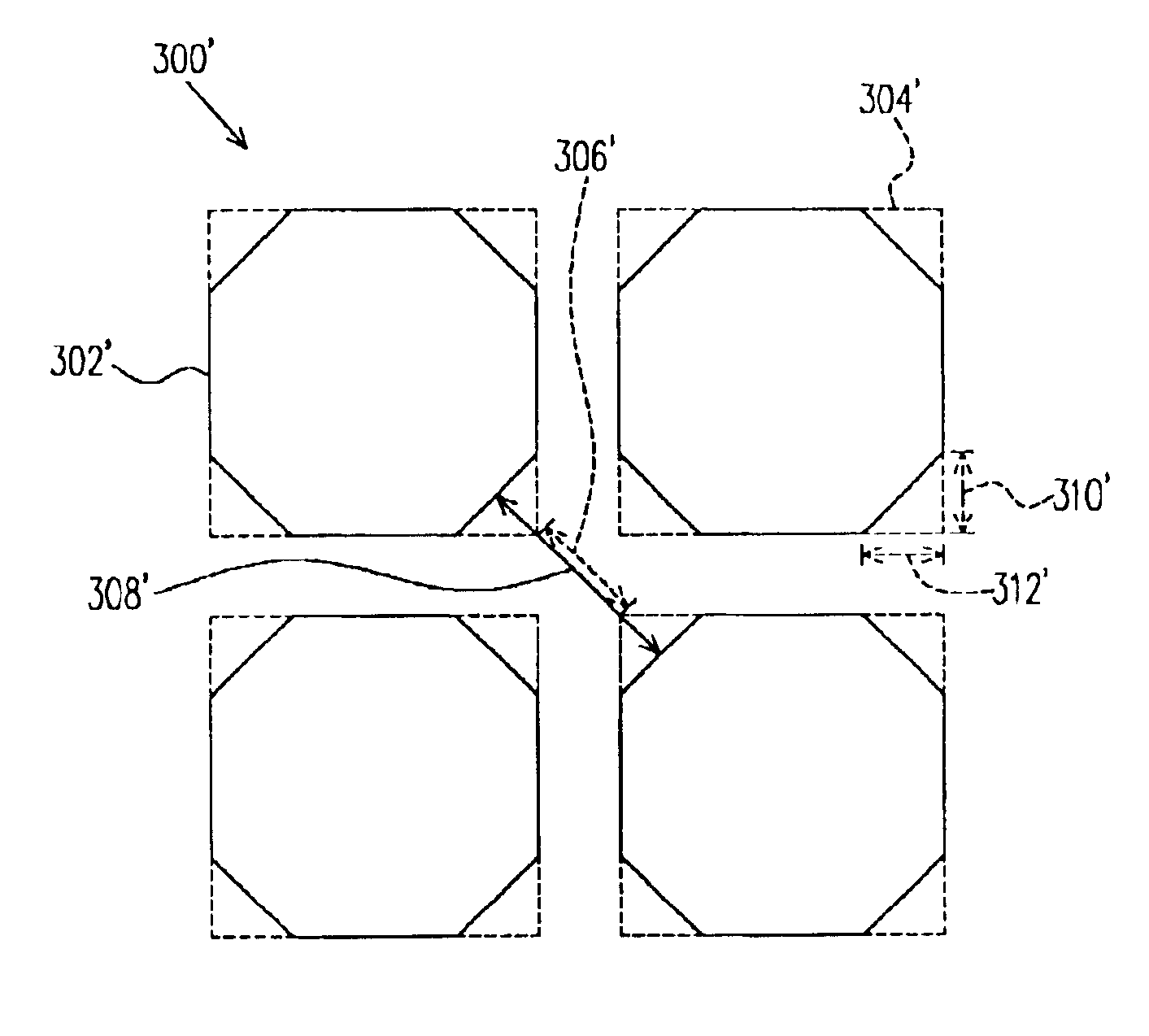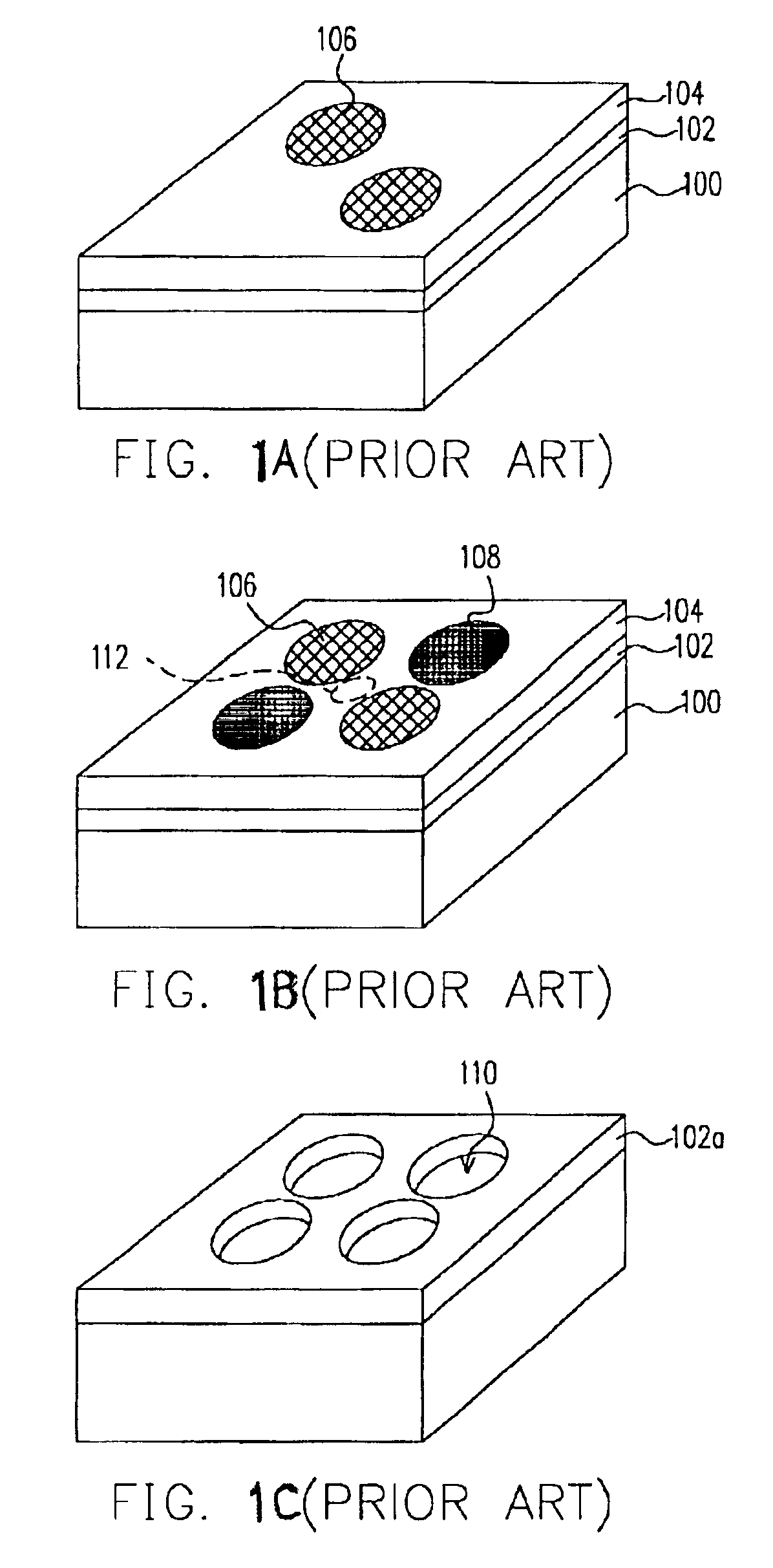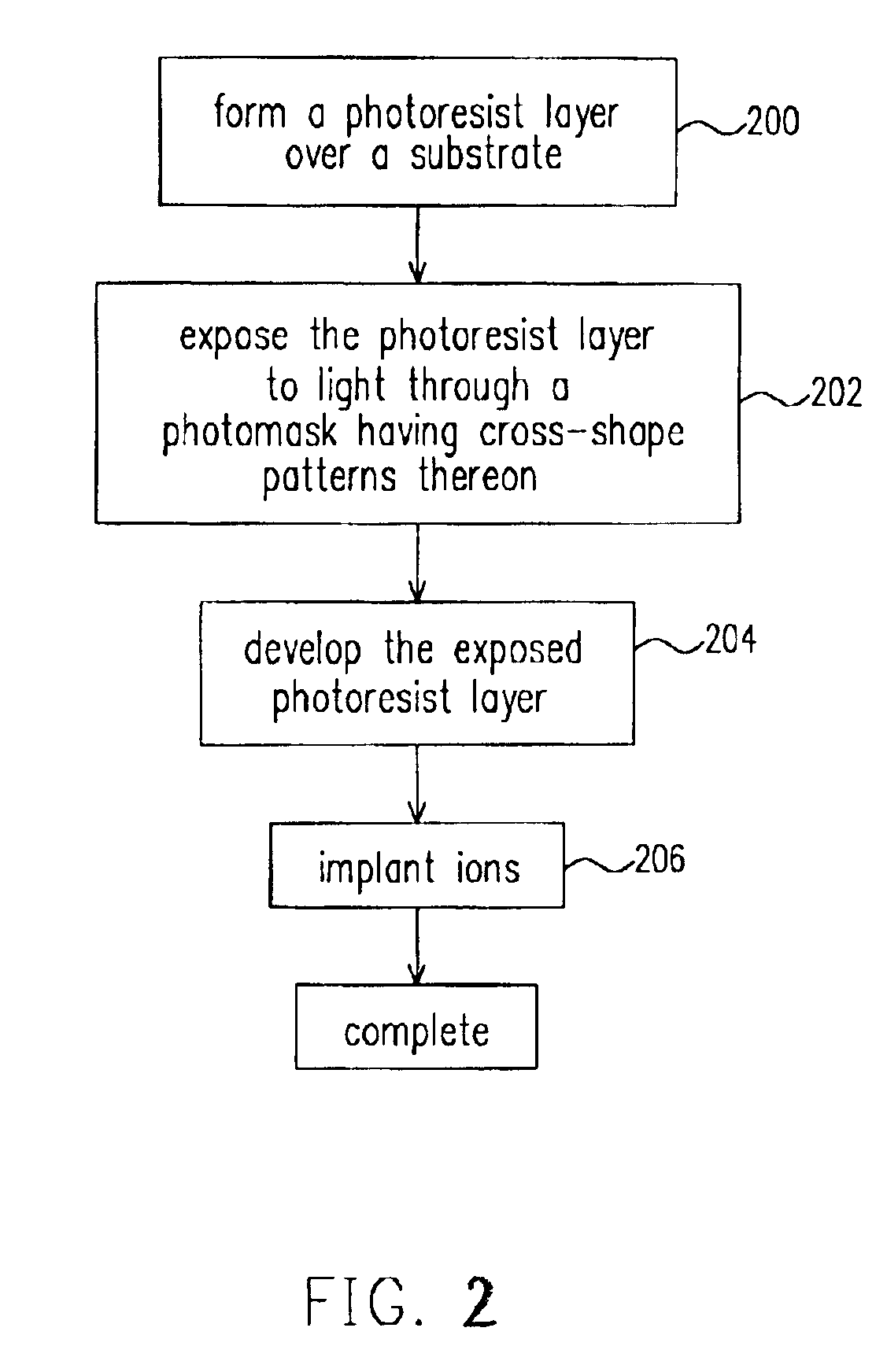Hole forming by cross-shape image exposure
a cross-shape, image-exposure technology, applied in the field of forming holes, can solve the problems of optical interference and double exposure, and achieve the effect of improving the optical image contrast between contacts
- Summary
- Abstract
- Description
- Claims
- Application Information
AI Technical Summary
Benefits of technology
Problems solved by technology
Method used
Image
Examples
Embodiment Construction
Reference will now be made in detail to the present preferred embodiments of the invention, examples of which are illustrated in the accompanying drawings. Wherever possible, the same reference numbers are used in the drawings and the description to refer to the same or like parts.
FIG. 2 is a flow chart showing the steps for forming holes in a layer through a a regular image with inwardly reduced corners, such as a cross-shape image exposure according to one preferred embodiment of this invention. In step 200, a photoresist layer is formed over a substrate. The substrate includes, for example, a semiconductor substrate, a semiconductor device, a conductive layer, a dielectric layer and so on. For example, a semiconductor device is formed over a semiconductor substrate and then a conductive layer that connects electrically with the semiconductor device is formed over the semiconductor substrate. A dielectric layer is formed over the semiconductor substrate covering the semiconductor ...
PUM
 Login to View More
Login to View More Abstract
Description
Claims
Application Information
 Login to View More
Login to View More - R&D
- Intellectual Property
- Life Sciences
- Materials
- Tech Scout
- Unparalleled Data Quality
- Higher Quality Content
- 60% Fewer Hallucinations
Browse by: Latest US Patents, China's latest patents, Technical Efficacy Thesaurus, Application Domain, Technology Topic, Popular Technical Reports.
© 2025 PatSnap. All rights reserved.Legal|Privacy policy|Modern Slavery Act Transparency Statement|Sitemap|About US| Contact US: help@patsnap.com



